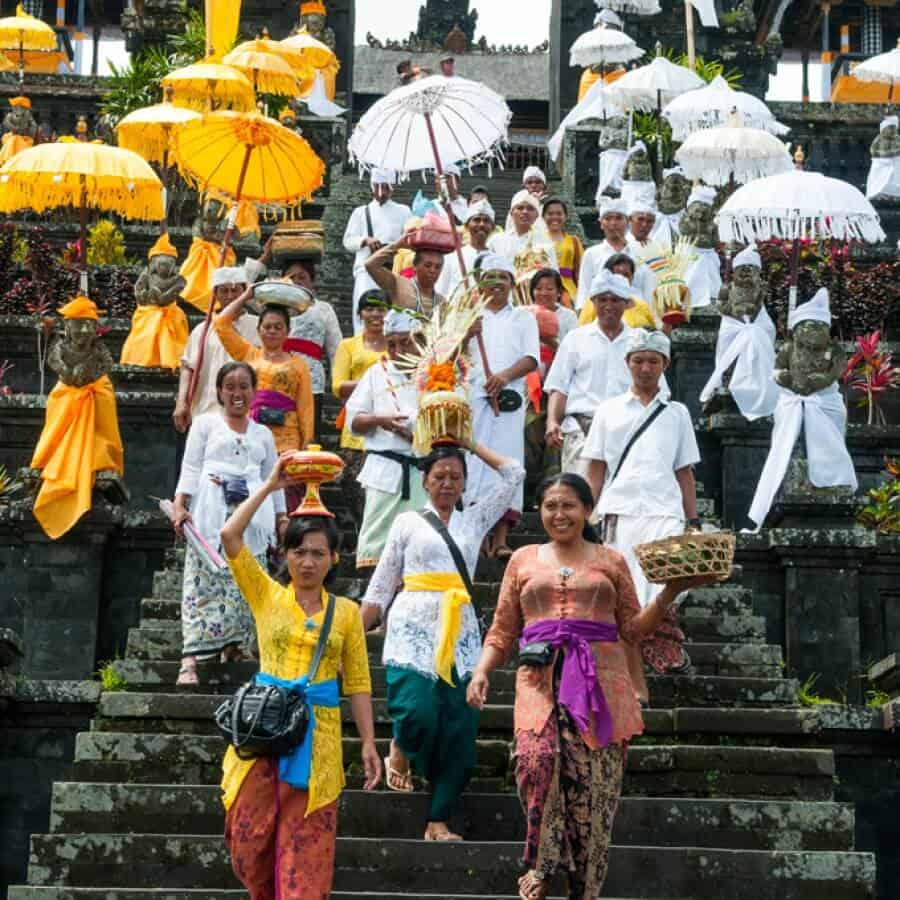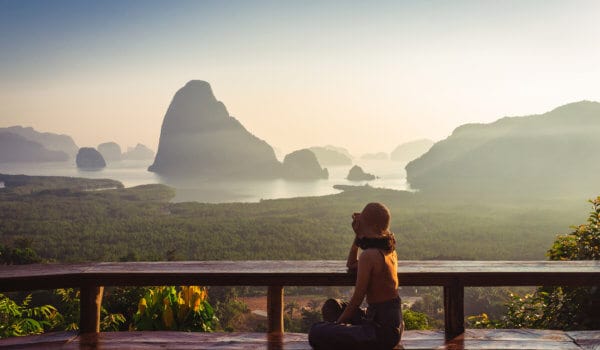Traveling to a faraway island in the middle of the Indian Ocean, you never know what to expect. You feel restless and eager to see what is waiting for you once you step off the airplane. Then suddenly, you wake up one morning with a yellow frog stuck to your bedroom window glass, or you spot a curious centipede in the shower, or huge white parrots start singing to you from the top of a palm tree. A whole new world. Still, what was most precious about Bali was its people. They showed us many different ways to be more generous and to live in the present. So we kept listening. And each day of our journey, we became more and more „present“.
Life on the Island
Our road trip with Made looked like an episode on the National Geographic channel. I still can not believe I was the one who took some of the photos. Things happen like this in Bali – you write down what you wish to see and then your guide or driver (often 2 in 1) plans a special tour for you. As you can assume, we visited the most iconic Hindu temples, some of the most beautiful wild beaches and some of the less wild ones, Tegalalang rice terraces and overlooks, the jungle, and even the Batur volcano area. Still, this is not meant to be a Bali travel report. I am dedicating this piece to the people of Bali, whose way of life and philosophy helped us the most in learning about this part of Indonesia.
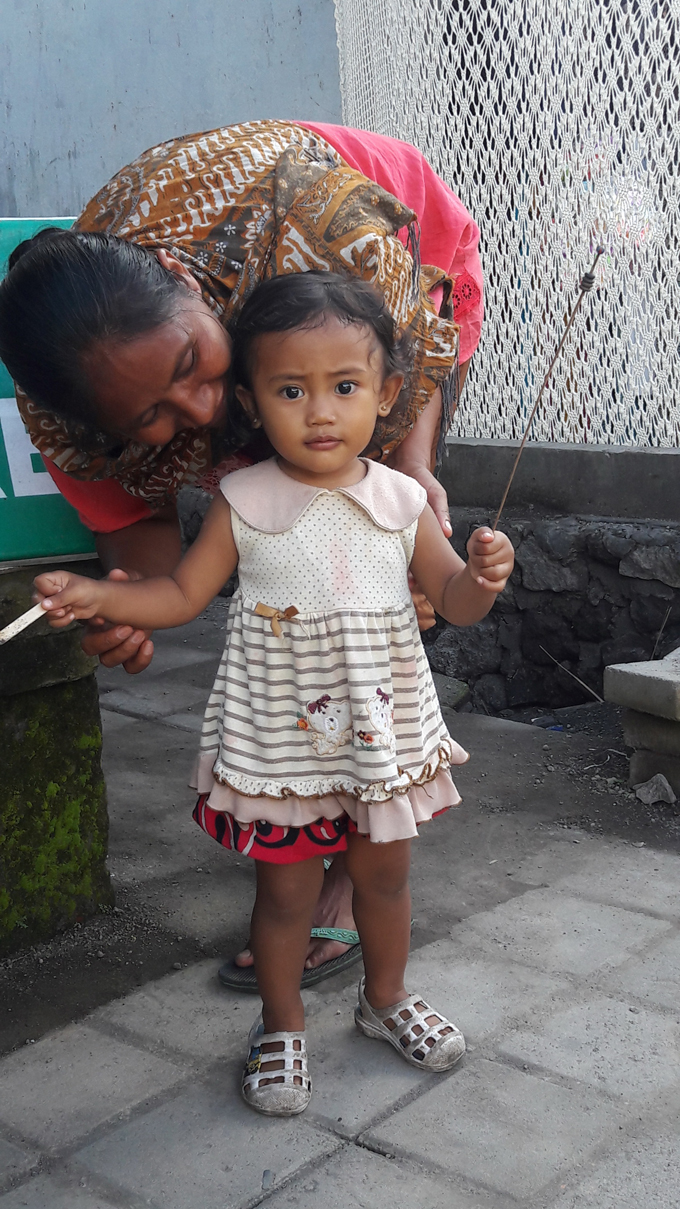
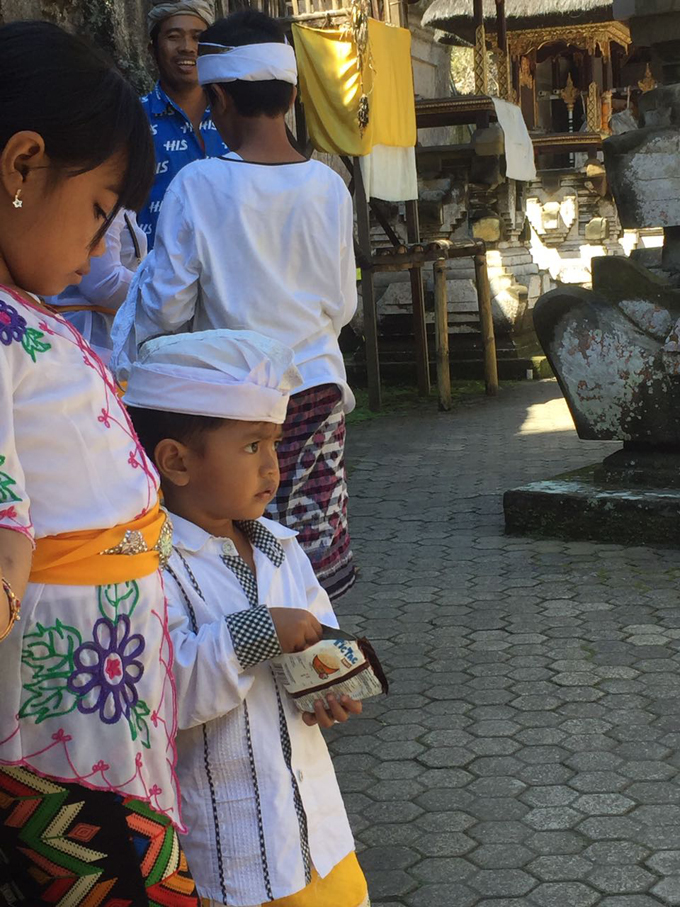
We spent most of the day in charming Ubud, in the central part of the island, known for art and culture, and also yoga centers. When you talk about Ubud, it’s hard skip mentioning the adorable macaques and the Sacred Monkey Forest. The Balinese believe the monkey is a holy animal, so they treat monkeys accordingly. The forest is actually a huge jungle where you can freely interact with a lot of wild monkeys, called macaques. What is interesting is: the local people and guards protect the monkeys from you, not the other way around. There is a list of rules you are asked to follow while visiting, and one of them is not ever to look a monkey directly in the eyes. It is considered as a sign of aggression, and the monkey might attack you. We had so much fun! All the guards wear traditional clothes and are very polite to visitors. It was very uplifting to see the amount of effort and dedication they put into keeping the monkeys healthy and safe. I will dare to say even spoiled.
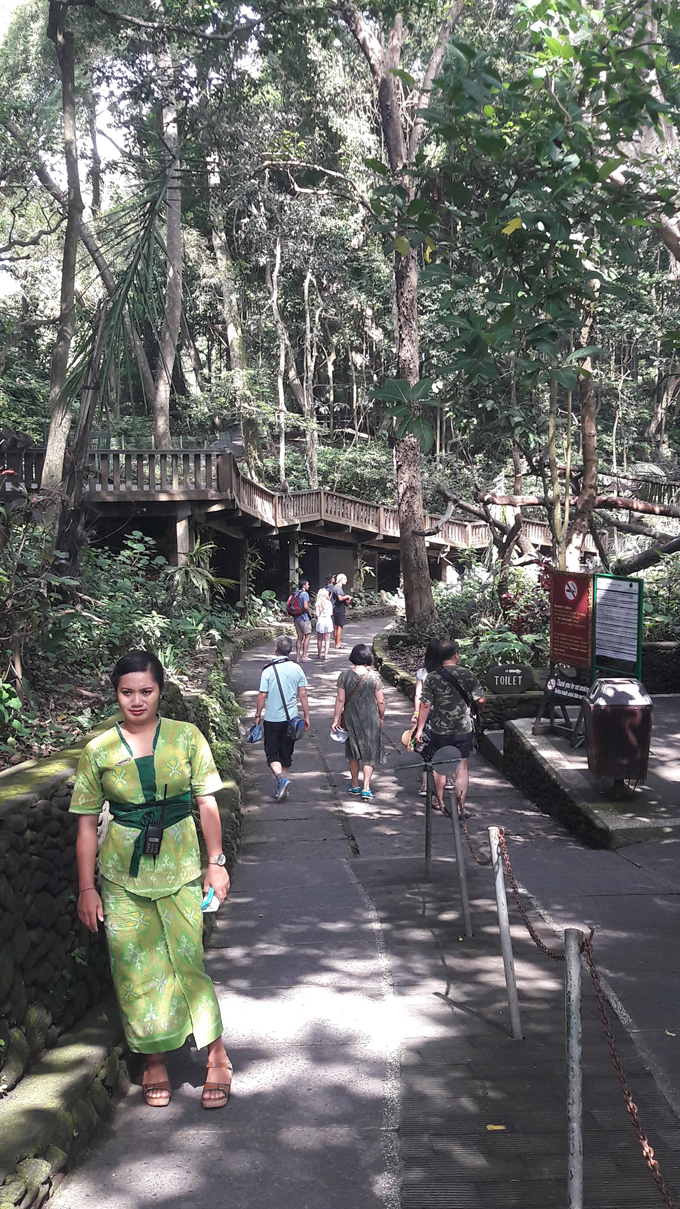
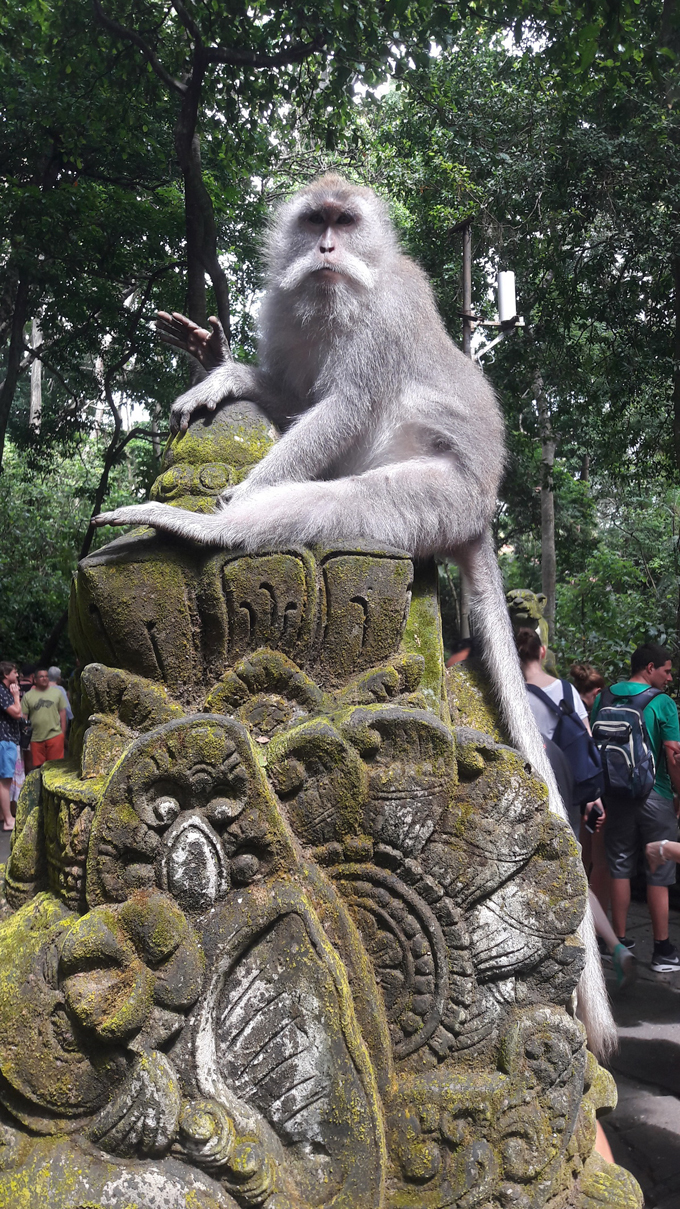
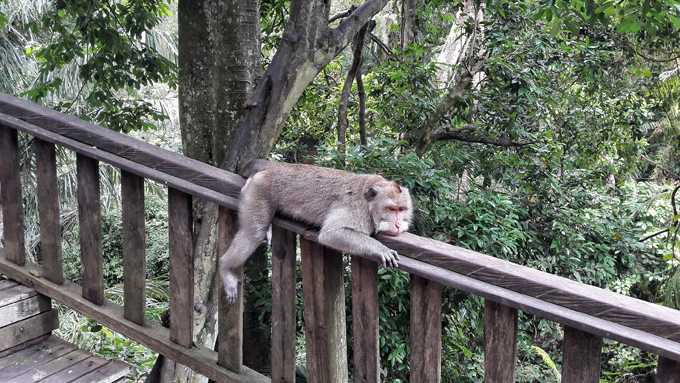
While walking through the jungle I was surprised to see that many of the larger trees had some kind of large fabric wrapped around their trunks. Made explained that these were sarongs. Since the local people believe a tree has a soul, it follows that trees need to wear sarongs, too, just like humans. The Balinese sometimes put sarongs around big rocks or stones, too, and you can see this alongside some of the beaches on the island. Also, all over the island, stone sculptures of the Gods have their own sarongs and little umbrellas to keep them safe from the Sun.
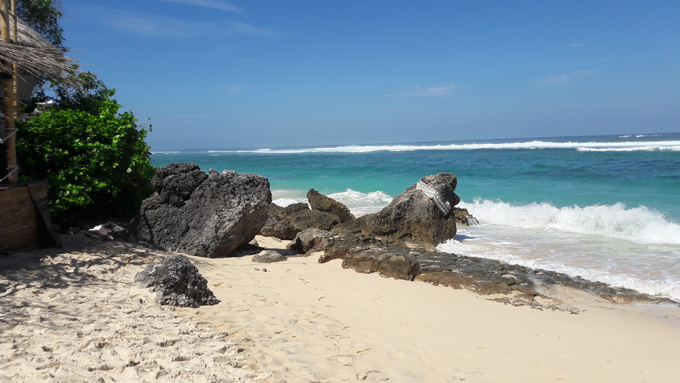
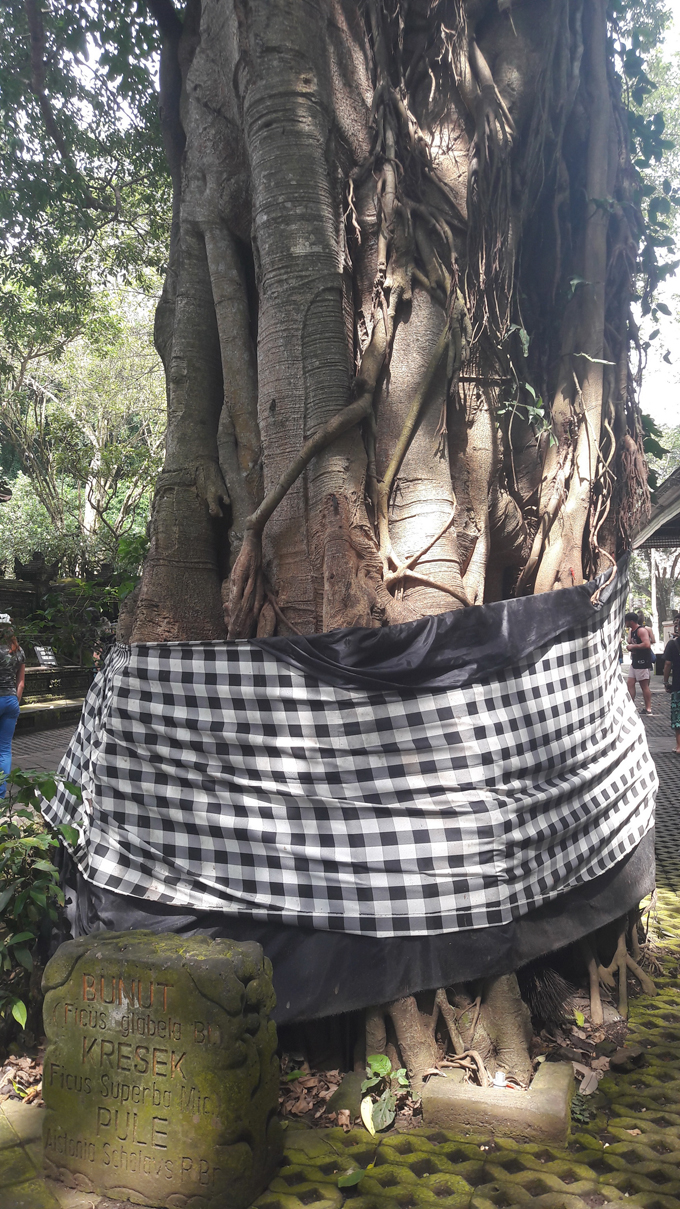
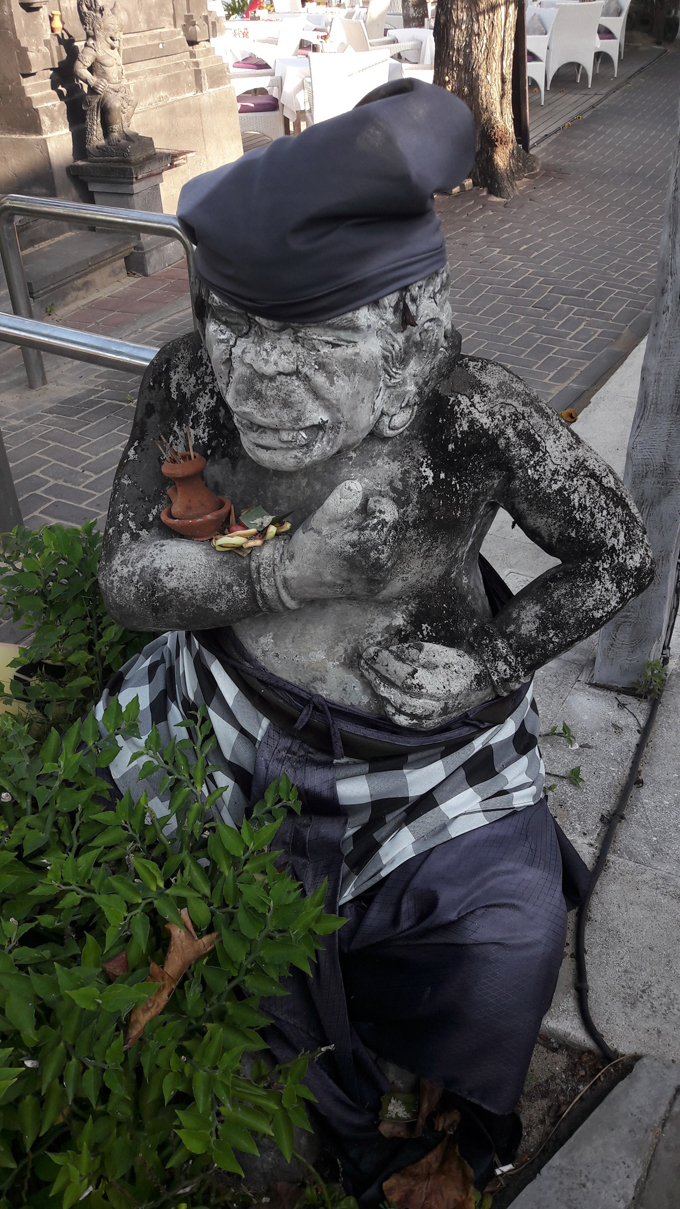
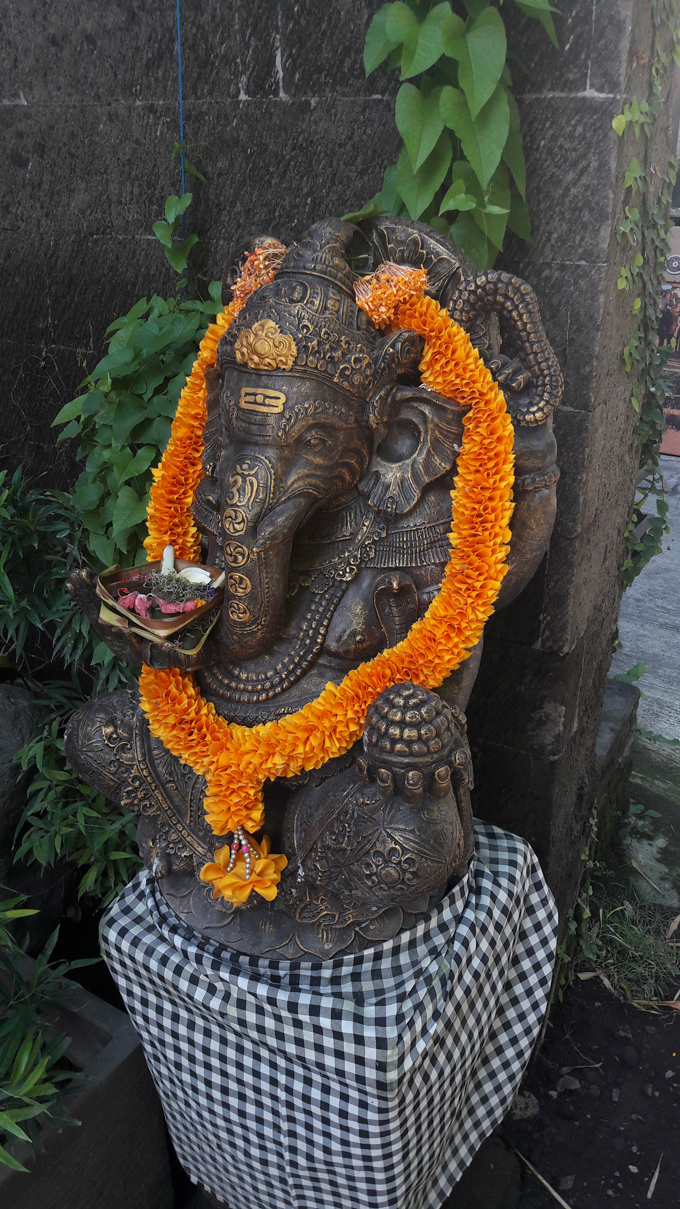
Since we were spending the day in the art center of the island, Made took us to see the famous Art Market, where you can buy souvenirs and all sorts of unique handmade bags, sandals, home decorations and jewelry made by people from the nearby villages. After taking quite a tour through the whole market, and after I was done with bargaining for bracelets and necklaces, I headed to the stand where the local women were selling sandals. They were gorgeous – handmade with a lot of little pearls and stones. Local people crave your attention so they can sell their products. They live tough lives, and most of them in that area support their families either from working in agriculture or making arts and crafts and selling clothes and footwear.
When a woman saw that I liked the sandals she was offering, she immediately knelt on her knees to take off my sneakers so I could try them on. I felt sad and uncomfortable, so I quickly made her stand up so I could try out the sandals on my own. The thing was – she was barely speaking English, and she was doing her best to beat the competition, who were shouting in English and trying to invite me to visit their stands. After we managed to find my size, I nodded as a sign that the shopping was done, and I also bought a bunch of bracelets. I barely stopped her from kneeling again, because she wanted to put my sneakers on. After I paid, she suddenly took out something like a mini broom and started to sprinkle the rest of the shoes and bracelets, including my sandals. I figured out that she had just blessed what I bought. I felt a strong need to hug her, which I did, not paying too much attention if what I was doing wasn’t in accordance with the local customs. It was in accordance with my feelings.
______________________***________________________
After a lunch break, my partner, Made, and I headed off for an adventure exploring the unknown areas of Ubud and visiting the rice paddies. Driving around the hidden corners of Tegalalang village, I couldn’t get enough of the spirit of the real Bali: no fancy resorts or hotels, just local people working in little back yards that had been turned into mechanic shops or improvised places for selling arts and crafts, yards where you could hear loud roosters and mothers playing with their kids or washing the laundry. The route brought us to a part of the village where we spotted some of the villagers harvesting rice. We stopped the car and asked Made to be our interpreter in the local Bahasa language – we just had to meet these dear people. They seemed tired and surprised that two strangers were even there, let alone the fact the strangers wanted to speak with them. They were kind enough to show us how the rice was grown and what the plant looked like just before it was harvested. They had no idea where Serbia was, or who Tesla or Novak Djokovic were. Still, they had surely heard of South Africa, where my partner was from. We understood that life was hard for them. Their hands were wrinkled, rough, in scarves. Still, they never stopped smiling while filling their sacks with rice and talking to us. They were old. They told us that people on the island eat so much rice they sometimes have to import it from Java. These people complete even the most basic daily tasks with a focus on gratitude and caring. It made me wonder what all the rest of us are complaining about. We thanked them in the traditional way, saying suksma (thank you) with our palms put together in a praying position and placed on our hearts, taking a bow.
They reminded me that life is not a fairy tale, and it doesn’t take much to be happy.
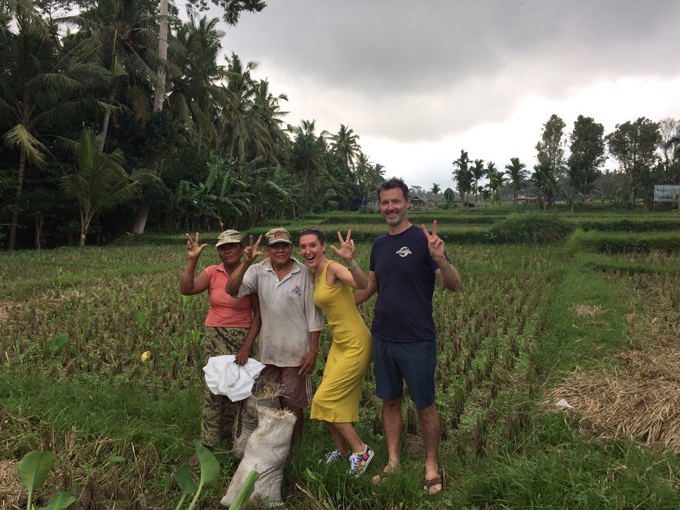
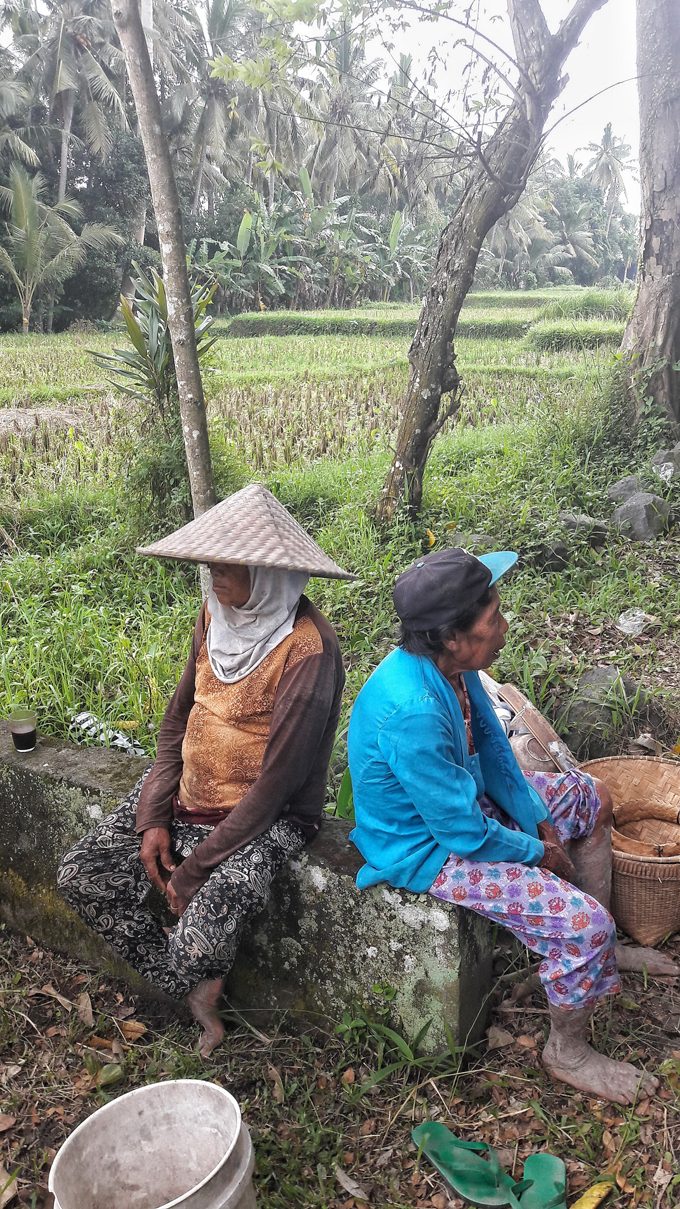
_______________________***_______________________
It was already early evening when we reached the gates of one of the most beautiful water temples in Bali, the Tirta Empul temple. Located in Tampak Siring village, the temple has been used for bathing in the sacred waters for healing and spiritual merit for more than a thousand years. The temple is dedicated to Vishnu, the Hindu God of water.
It was divine and unusual to watch the locals giving offerings and bathing in a long pool carved from native stone and fed by a sacred spring with 12 fountains. Strangers are allowed to take a bath too, but the water was too cold for us, and we preferred wandering around and watching.
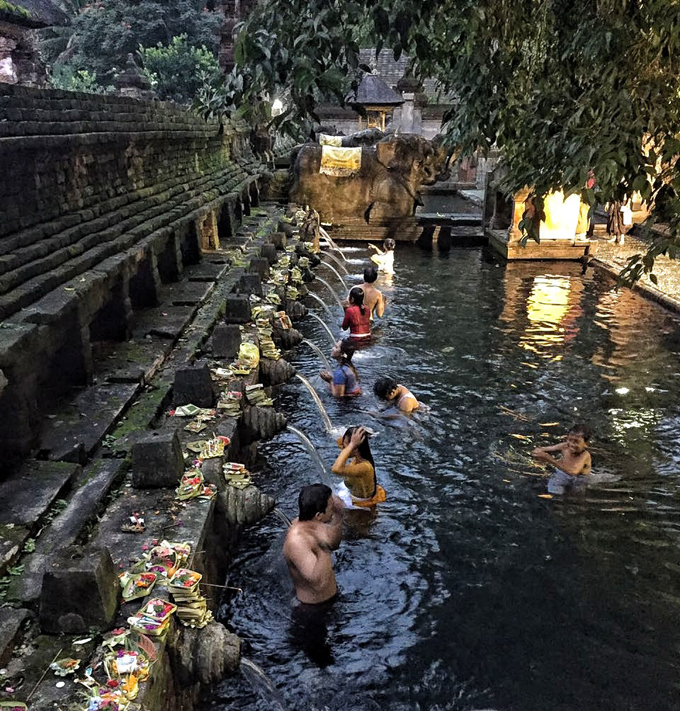
Worshippers first make an offering at the temple, then climb into the main pool to bathe and pray. Made explained to us how the little offerings are made: – We call offerings canang sari, and this is the most simple type of offering. We make these offerings to make the Gods happy, to please them and to celebrate the peace given to us. Canang sari is also made as a supplication to the lower spirits so they do not disturb the living. We make baskets out of banana or coconut leaves, and we put five different flowers inside, turned to four cardinal directions, and each dedicated to different God. Sometimes, a bit of food or rice is placed there, as well – he said.
By the end of our journey we figured out that making an offering is an act of self-sacrifice and devotion. These little gifts take an enormous amount of time and effort to make. So, the more of yourself you put in it, the more valuable and meaningful your offering will be.
This kind of philosophy underlies many other aspects of life for the people in Bali.
While I was discovering the huge back yard of the temple I realised that something was going on in another part of the complex. It was an evening prayer. The priest and the other locals were dressed in white. Four people were sitting on the ground, following the movements of the priest. There was no access for non-believers or regular visitors. They spotted me, but said nothing as I was silent and stood behind the small gate, watching. I barely heard the quiet chanting of a priest. The ceremony lasted for about ten minutes. Being quiet, standing there witnessing that small sacred ritual, made me feel numb. In a positive way. Two men who were helping the priest even let me take a photo of them, after the prayer was over.
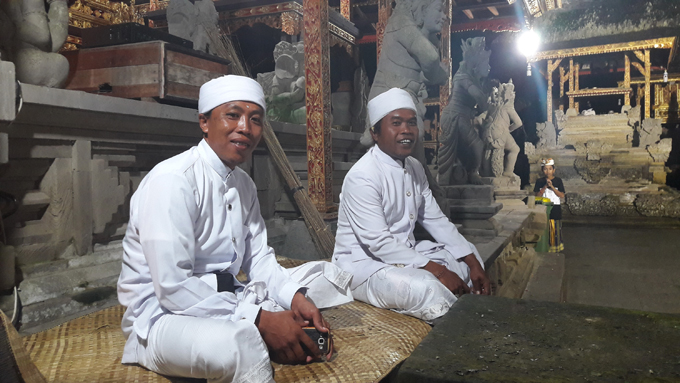
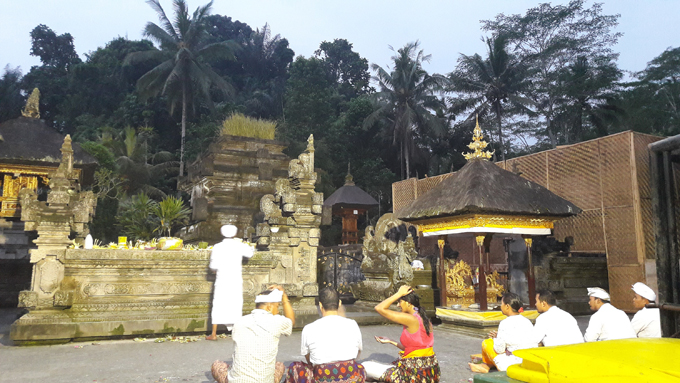
It was night. I looked behind me and I saw two huge dragon sculptures looking at me. The high palmtrees of the jungle were swaying in the wind.
It all seemed timeless.
To be continued…
Photos: Jelena Zoric
Support us!
All your donations will be used to pay the magazine’s journalists and to support the ongoing costs of maintaining the site.
Share this post
Interested in co-operating with us?
We are open to co-operation from writers and businesses alike. You can reach us on our email at [email protected]/[email protected] and we will get back to you as quick as we can.
